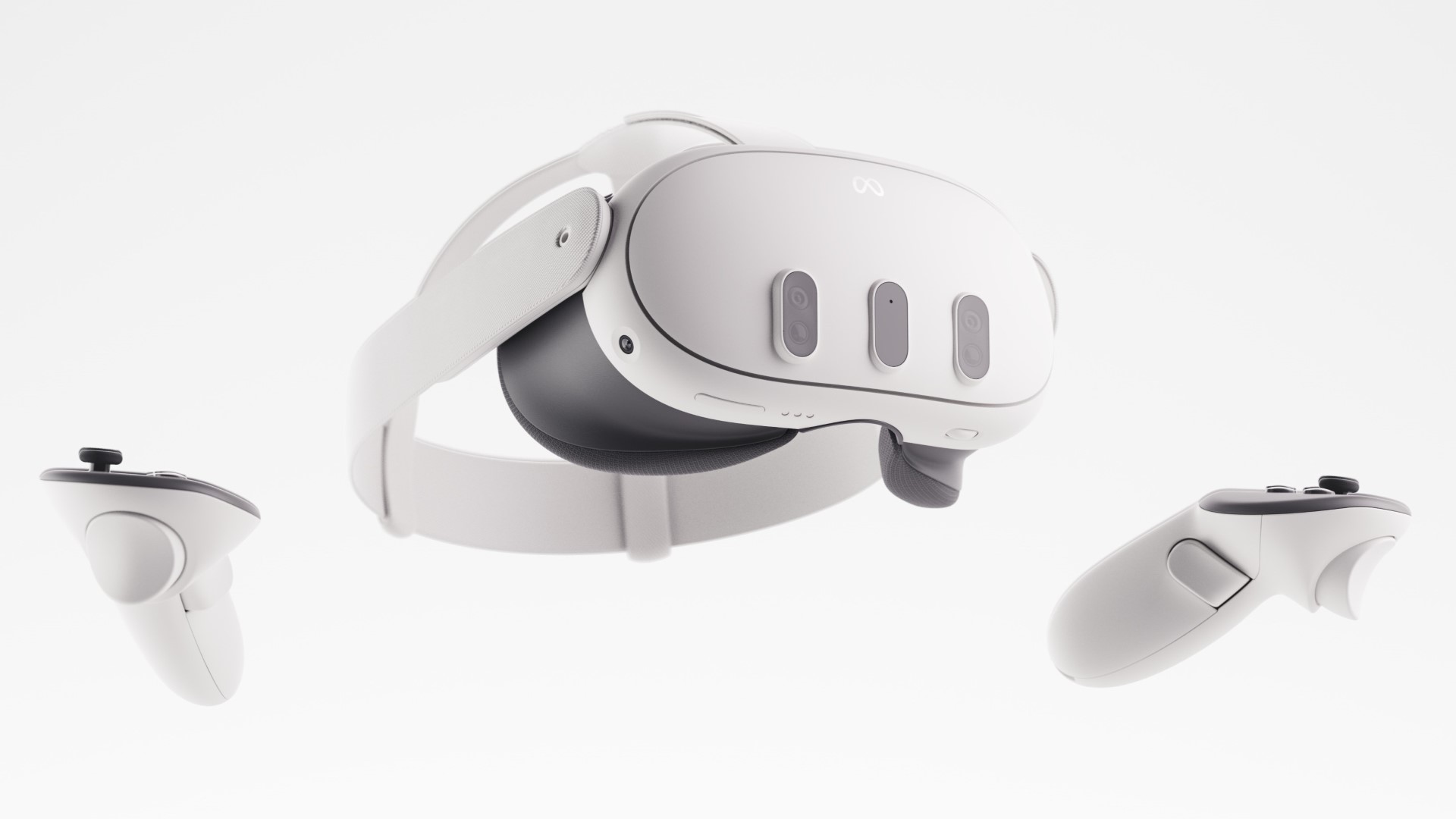The Lamen
The Meta Quest 3 is great hardware, but games are what it really needs

The Meta Quest 3 is continually pushing its VR agenda as other major manufacturers like HTC pull back. Perhaps the ski googles are a prelude to sleeker shades — but games are what really count.
Photo: Meta
The Quest headsets have been going through an identity crisis — falling off their pre-pandemic highs in efforts to justify the “metaverse.” Apple’s rumored mixed-reality headset had been quietly gaining traction as Meta struggled, and the company needed a head start: a more mainstream alternative to Apple’s headset.
In comes the Meta Quest 3: a $500 “mixed-reality headset” that’s $200 more expensive than the previous model, but still a fraction of the $3,500 Vision Pro. The Quest 3 fills out the spec sheet expectedly, but the notable change here is it’s more of a gaming console.
In terms of hardware improvements, the Meta Quest 3 features:
- Double the graphics performance of the Quest 2.
- A 30 percent improvement in resolution with the 4K infinity display — with battery life “about the same as Quest 2.”
- More memory, better audio, and a slimmer optic profile.
Meta subtly refers to the Quest 3 as the first “mass-market mixed reality headset,” pointing toward the biggest hardware difference: two full-color front cameras on the headset that allow for significantly better passthrough video (it was grayscale on the Meta Quest 2, but available on the significantly more expensive Quest Pro).
◢ Looking at the real world through a lens is fun and games, but what the Meta Quest 3 really needs are games.
I’ll put it out there: building something out of Legos is a tactile experience best left unadulterated with the virtual world. However, the industry’s pivot toward mixed reality is understandable.



The Quest 3 makes things sleeker, but it’s still a clunky ski-google contraption strapped to your head.
Photos: Meta
- However, they were quick to realize that AR was a one-trick pony — an experience not many stuck to.
- Mixed reality headsets came in to fill this void — Apple, albeit long stuck in the rumor mill, came out with the greatest demonstration.
Despite receiving heaping praise, Apple’s absurdly priced isn’t for the average gamer — and that’s a great spot for Meta to take. Especially true when others are still gearing up on the hardware front.
To position itself as a contemporary of modern consoles, the Quest 3 needs games and longevity, an area where companies like Nintendo have excelled even with sub-par hardware.
- The Meta Quest 3 comes bundled with Asgard’s Wrath 2, with games like Assassin’s Creed Nexus, Ghostbusters: Rise of the Ghost Lord, and Attack on Titan VR: Unbreakable on the way.
- Meta says that the Quest 3 is getting 100 “new and upgraded titles” by the end of 2023, with over half taking advantage of its mixed-reality capabilities. Everything from the Quest 2 also remains playable.
- The headset will also benefit from Xbox Cloud Gaming’s launch in December: allowing access to games like Halo Infinite, Forza Horizon 5, and Minecraft Legends.
Even for a great VR headset, however, it’s far from mainstream status. While Meta may have plans for a cheaper Quest 3, I’m hopeful about how it gets developers interested. Interested in more mixed reality stuff, that is. Until then, it’s a cool way to play games.
The Meta Quest 3 is up for purchase, starting at $499.99 for the 128 GB model.